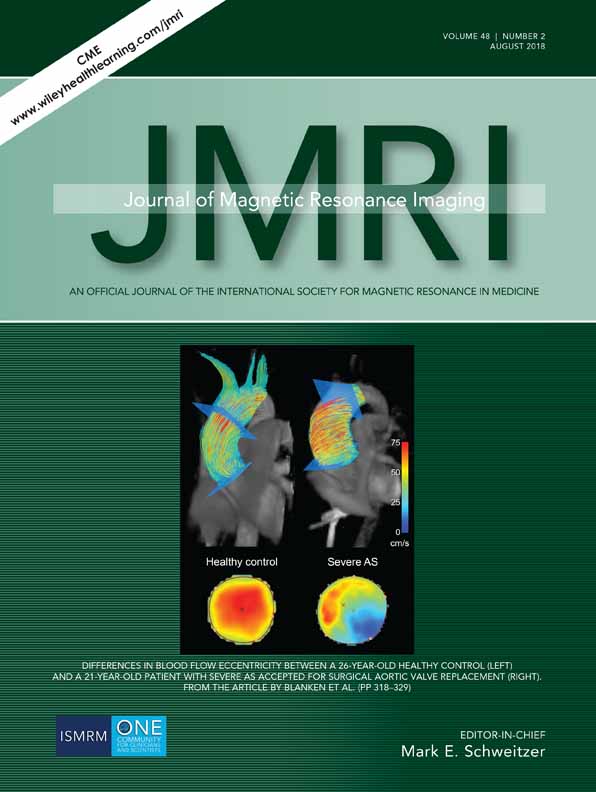Improved segmental myocardial strain reproducibility using deformable registration algorithms compared with feature tracking cardiac MRI and speckle tracking echocardiography
Abstract
Background
Segmental myocardial strain using feature tracking (FT) cardiac MRI is not acceptable due to poor reproducibility.
Purpose
To assess the reproducibility of left ventricle (LV) segmental myocardial strain measured by deformation registration algorithm (DRA).
Study Type
Prospective clinical trial.
Subjects
Sixteen healthy volunteers and 28 hypertrophic cardiomyopathy (HCM) patients.
Field Strength/Sequence
Retrospective ECG gating cardiac MRI imaging was performed at 3.0T with a steady-state free precession (SSFP) sequence.
Assessment
LV global and segmental myocardial strains were analyzed by DRA, FT, and speckle tracking echocardiography (STE) by two experienced observers and the reproducibility of global and segmental strains were compared.
Statistical Tests
Reproducibility was tested by coefficient of variation (COV) and intraclass correlation coefficient (ICC). Receiver operator curves as well as comparison of areas under the curve (AUC) were analyzed.
Results
DRA showed the best observer agreement on segmental strain evaluated by ICC, LS (longitudinal strain): intraobserver variability range (0.98,1.00), interobserver variability range (0.83,0.92), CS (circumferential strain): intraobserver variability range (0.90,0.99), interobserver variability range (0.80,0.97), RS (radial strain): intraobserver variability range (0.84,0.99), interobserver variability range (0.85,0.99). Segmental LS, CS, and RS agreements evaluated by COV for FT and STE were poor. LV global myocardial strain of HCM was significantly lower than controls for all applied techniques, but global CS by DRA had better accuracy compared to FT or STE for distinguishing HCM from healthy subjects: AUC 0.880 (DRA) vs. 0.577 (FT) or 0.736 (STE), P < 0.05.
Data Conclusions
DRA is a reliable and robust analysis tool for segmental myocardial strain. Global CS by DRA allows discrimination between HCM and normal controls with better accuracy compared with FT and STE.
Level of Evidence: 1
Technical Efficacy: Stage 2
J. MAGN. RESON. IMAGING 2018;48:404–414.
Conflict of Interest
A.G. and X.-Y.Z. are employees of Siemens. The authors declare that they have no competing interests regarding this study.




